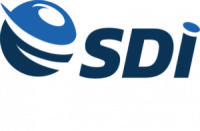Introduction to the New Global Assessment Report
February was a busy month for the team at SDi, and it’s only now in mid-March it seems that I can catch a breath to think over our accomplishments. On February 28th, we published the 2020 version of our flagship Global Assessment Report, which provides our market estimates and overall evaluation of the analytical and life science instrumentation industry. With barely a Leap Day weekend to celebrate, most of the team was then off to Chicago for Pittcon 2020, one of the premier conferences for our industry in the US. We were fortunate to have better weather than expected for the beginning of March in Chicago, and the show kept us busy interacting with vendors and clients, but not too busy to forget to sample the deep dish at Giordano’s. Now that the team is back in Los Angeles, we’re setting to work on the rest of our publication schedule for the year, including our ambitious new Global Lab Consumables report due this fall, and titles on service and a number of other specific technologies and end-markets for laboratory instrumentation. But our bestselling title deserves further discussion.
This now marks the publication of the 17th full edition of the Global Assessment Report. As in years past, we have striven to ensure that the overall presentation aligns with that of previous editions. At the same time, we try to improve and innovate as much as possible, and I think it makes sense to point out some of the changes that have been incorporated into this new edition.
In terms of the markets and technologies covered, there is an almost complete overlap with the previous edition, but there have been some reorganizations and realignments that bear mentioning. As vendors become more and more interested in the overall laboratory workflow of customers, one of the areas receiving a great deal of attention is sample preparation, which can represent a bottleneck for many researchers. While SDi has published several reports on this topic, and many of the techniques covered in Global are relevant to sample prep, we decided that this importance should be reflected by the report organization. Thus, one of the chapters in the report covers Sample Preparation Techniques. This section includes techniques previously found primarily in the lab equipment category, like centrifugation and extraction techniques, but also nucleic acid prep, drawn from the life science instrumentation category. It also includes brand-new coverage of cell separation and sonicators. Another new market brief in this edition is ion mobility spectrometry, which has been added to the mass spectrometry section. We have followed IMS for a long time in our mass spec and security reports, and judged that it was now time to include it in the Global.
So while Sample Prep has been added, the former General Analytical Techniques section has been eliminated. Fortunately, most of the techniques covered have been retained, but reclassified. Lab balances, electrochemistry, and dissolution testing have been placed in Lab Equipment. CFA & Discrete Analyzers have been placed in molecular spectroscopy, as a majority of the actual analysis is performed by spectroscopy methods in these complex systems. The radioactivity market brief has, alas, been dropped. However, more techniques have been added than dropped, and we’re hopeful that the new organization will better meet the needs of our clients.




